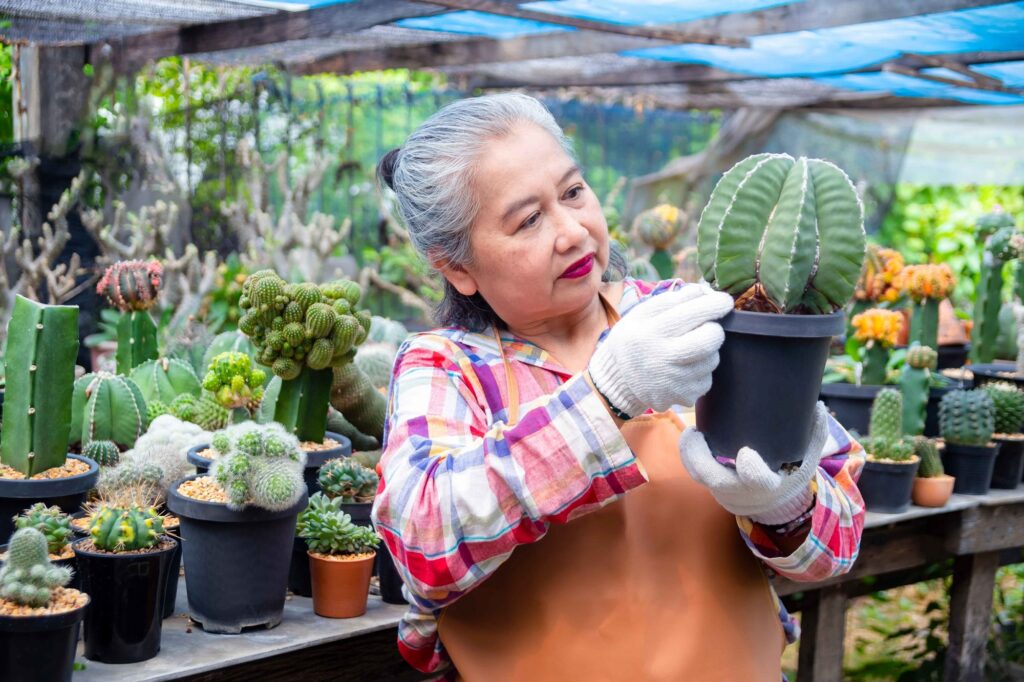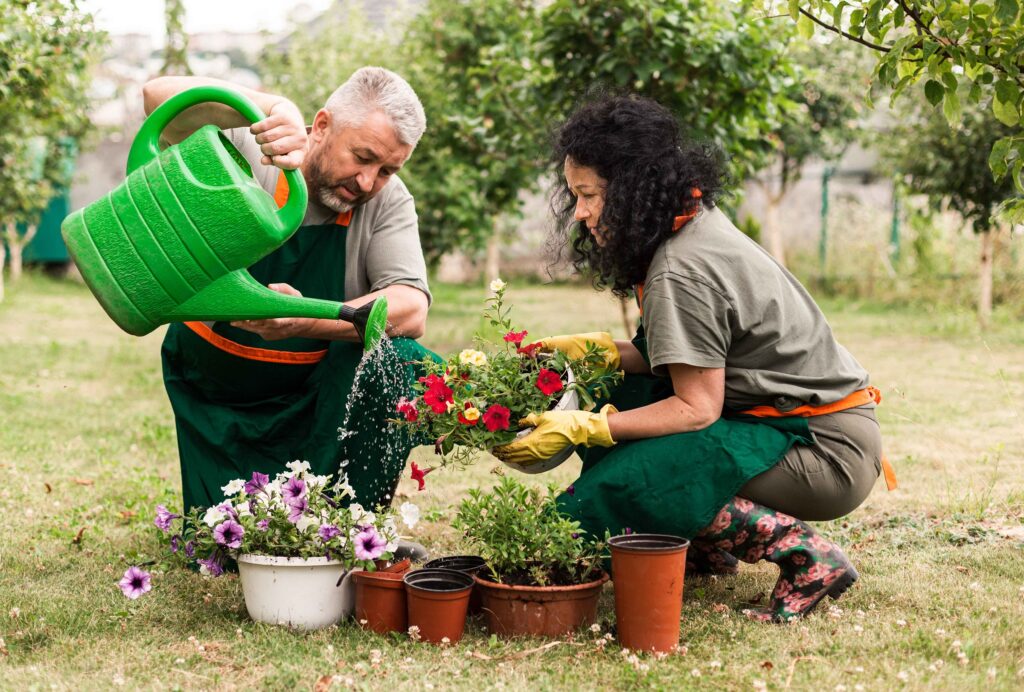Discover easy indoor gardening for seniors and learn how to bring nature into your home. Simple, low-maintenance plants and fun tips to brighten your living space. Gardening is a wonderful way to stay active, reduce stress, and connect with nature. For seniors, indoor gardening offers the added benefit of convenience, allowing you to enjoy plants and greenery without the need to venture outdoors. Whether you have a sunny windowsill, a small balcony, or just a countertop, indoor gardening can bring life, beauty, and a sense of accomplishment to your home. This guide explores easy ways for seniors to start and maintain an indoor garden, including practical tips and plant recommendations. Indoor gardening for seniors is a relaxing and rewarding way to stay connected with nature at home.
1. Benefits of Indoor Gardening for Seniors
Physical Benefits:
- Light Exercise: Gardening activities like watering, pruning, and planting help improve dexterity and provide gentle physical activity.
- Improved Air Quality: Plants naturally purify the air, reducing pollutants and increasing oxygen levels indoors.
Mental Benefits:
- Stress Reduction: Tending to plants can be meditative and calming, lowering stress and anxiety levels.
- Sense of Purpose: Watching plants grow and thrive provides a rewarding sense of accomplishment.
Social Benefits:
- Shared Hobby: Gardening can be a great way to connect with family or friends who share an interest in plants.
- Community Engagement: Join gardening groups or attend plant swaps to meet like-minded individuals.
2. Getting Started: Setting Up Your Indoor Garden
Choose the Right Location:
- Select a spot with sufficient natural light, such as a sunny windowsill or a brightly lit corner.
- For areas with limited sunlight, consider using grow lights to provide the necessary light spectrum for plant growth.
Pick Suitable Containers:
- Use pots with drainage holes to prevent overwatering and root rot.
- Choose lightweight containers for easier handling and movement.
Prepare the Right Soil:
- Opt for potting mixes specifically designed for indoor plants. These mixes are lighter and contain the right nutrients.
- Avoid using garden soil, which may be too dense and harbor pests.
Gather Essential Tools:
- Small gardening tools such as a trowel, pruning shears, and a watering can.
- Gardening gloves for comfort and protection.
3. Easy-to-Maintain Plants for Indoor Gardening
Low-Maintenance Greenery:
- Pothos: A hardy vine that thrives in various lighting conditions and requires minimal care.
- Snake Plant: Known for its air-purifying properties, it can tolerate low light and infrequent watering.
Herbs:
- Basil: Perfect for adding fresh flavor to meals, basil grows well in sunny spots.
- Mint: A fast-growing herb that thrives with regular watering and partial sunlight.
Flowering Plants:
- African Violets: Compact and colorful, they bloom year-round with proper care.
- Peace Lily: Elegant and easy to grow, this plant produces white blooms and thrives in low light.
Edible Plants:
- Cherry Tomatoes: These can be grown indoors with adequate light and regular feeding.
- Lettuce: Quick-growing and perfect for small spaces, lettuce thrives in shallow containers.
4. Tips for Successful Indoor Gardening
Water Wisely:
- Check soil moisture before watering to avoid overwatering.
- Use a small watering can or spray bottle for better control.
Fertilize Regularly:
- Feed plants with a balanced liquid fertilizer every few weeks to promote healthy growth.
- Use organic options for herbs and edible plants.
Prune and Groom:
- Trim dead or yellowing leaves to encourage new growth.
- Rotate plants occasionally for even light exposure and balanced growth.
Pest Control:
- Inspect plants regularly for pests like aphids or spider mites.
- Use natural pest control methods, such as neem oil or soapy water sprays, to protect plants.
5. Creative Indoor Gardening Ideas
Vertical Gardening:
- Install wall-mounted planters or hanging baskets to save space and add visual interest.
- Great for small spaces like apartments or condos.
Terrariums:
- Create miniature gardens in glass containers using moss, small plants, and decorative stones.
- Low-maintenance and visually appealing.
Hydroponic Gardening:
- Grow plants without soil using water and nutrient solutions. Kits like AeroGarden make this method easy and fun.
Themed Gardens:
- Herb Garden: Grow a variety of herbs for cooking and teas.
- Zen Garden: Combine succulents, sand, and small stones for a calming indoor space.
6. Staying Motivated and Engaged
Start Small:
- Begin with a few easy-to-care-for plants to build confidence and experience.
- Gradually expand your garden as you learn and grow more comfortable.
Learn Continuously:
- Read books, watch videos, or attend workshops on indoor gardening.
- Experiment with different plants to discover what works best in your space.
Celebrate Milestones:
- Take pride in small achievements, like your first bloom or a successful harvest.
- Share your progress with friends, family, or online gardening communities.
List of benifits:
With indoor gardening for seniors, even small spaces can become green, vibrant sanctuaries.
Easy-to-care plants make indoor gardening for seniors simple, fun, and stress-free.
Indoor gardening for seniors helps improve mood, focus, and overall mental well-being.
From herbs to succulents, indoor gardening for seniors offers endless creative possibilities.
Indoor gardening for seniors encourages light physical activity and a sense of daily purpose.
Adding greenery through indoor gardening for seniors brings life and freshness into any room.
With just a few pots and sunlight, indoor gardening for seniors can transform living spaces beautifully.
Indoor gardening for seniors builds mindfulness, patience, and joy through nurturing growth.
Most importantly, indoor gardening for seniors allows older adults to enjoy nature—right from home.
Conclusion
Indoor gardening is a rewarding hobby that brings the beauty and benefits of nature into your home. With a bit of planning and care, seniors can enjoy lush greenery, fresh herbs, and vibrant flowers year-round. Whether you’re a seasoned gardener or just starting out, indoor gardening is a fulfilling way to stay active, nurture creativity, and enhance your living space. Embrace the joy of gardening and let it enrich your golden years.
Other Articles

Jitterbug Smart3 Review: A Smartphone Designed for Simplicity and Seniors
The Jitterbug Smart3, developed by Lively, is a smartphone tailored to meet the needs of seniors and those who prefer a simplified smartphone experience. With its user-friendly interface, accessibility features,

SugarMute Review 2025: Does This Blood Sugar Supplement Really Work?
Can SugarMute Really Help Control Blood Sugar? Here’s What We Found Uncover the truth in this 2025 SugarMute review. Learn how this blood sugar supplement works, its ingredients, benefits, side

The Ultimate Sleep Aid Roundup for Adults 60 and Over
Why Sleep Becomes More Challenging After 60? For decades, sleep may have felt like second nature — something that simply happened when you closed your eyes. But for many adults

Book Review: The Total Money Makeover by Dave Ramsey
For many people over 60, financial independence can feel just out of reach. Debt may still linger, retirement savings might not be where you hoped, and the dream of living

Hearing and Vision Changes After 60: What’s Normal and What’s Not
Aging brings many changes, and two of the most noticeable involve hearing and vision. For seniors, these shifts may feel frustrating, but they are often a natural part of growing

How to Boost Your Energy Levels Naturally After 60
Feeling a little less energetic as you age? You’re not alone. Many people over 60 experience dips in energy, but the good news is that natural strategies can help you





